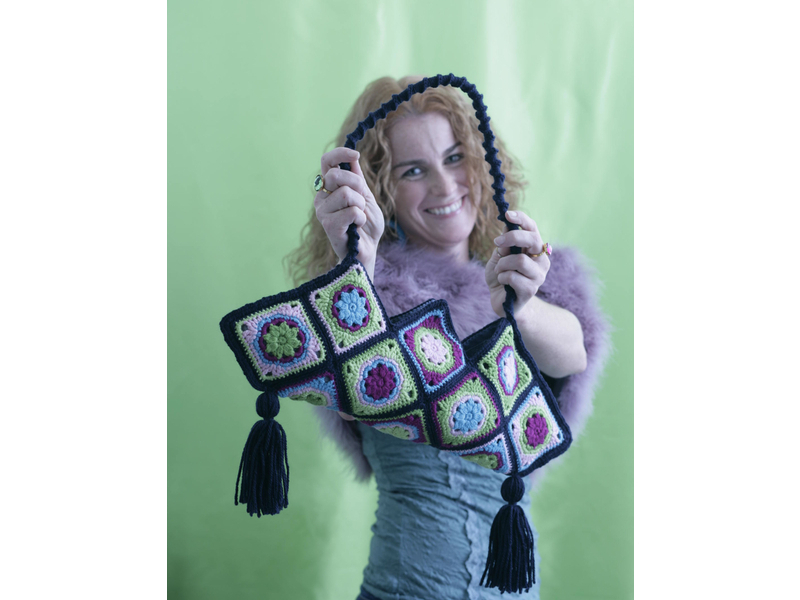Switch to Light Blue.
Rnd 4: Pull up a loop in the center sc of any 5 sc group, ch 1, 2 sc in same sc, (sc in next sc, sc2tog, sc in next sc, 3 sc in next sc) 7x, sc in next sc, sc2tog, sc in next sc (48 sc).
First, fasten off your yarn leaving about an 8″ tail, and thread it onto a tapestry needle. With the RS facing, go under both loops of the first stitch of the rnd.
Pull the needle through to the WS and then insert it into the middle of the last stitch of the rnd. Weave in the end on the WS. Fasten off Light Blue. Join to first st of rnd as shown.
Switch to Light Pink.
Rnd 5: Pull up a loop in any sc2tog, ch 1, sc in next st, * sc2tog, hdc in next st, dc in next st (tr, ch 3, tr) in next st, dc in next st, hdc in next st, sc2tog, sc in next 3 st, rep from * 3 x, sc2tog, hdc in next st, dc in next st, (tr, ch 3, tr) in next st, dc in next st, hdc in next st, sc2tog, sc in next st, (44 st and four, ch 3 corners). Fasten off Light Pink. Join to first st of rnd.
Switch to Light Green.
Rnd 6: Pull up a loop in any center sc in which there are 3 sc in a row, ch 1, sc in next 5 st, * (2 sc, hdc, 2 sc) in corner ch 3 space, sc in next 11 st, rep from * 3 x, (2 sc, hdc, 2 sc) in corner ch 3 space, sc in next 5 st (64 st). Fasten off Light Green. Join to first st of rnd.
Switch to Navy.
Rnd 7: Pull up a loop in any center sc in which there are 5 sc in a row, ch 1, sc in next 7 st, * (2 sc, hdc, 2 sc) in next st, sc in next 15 st, rep from * 3 x, (2 sc, hdc, 2 sc) in next st, sc in next 7 st (72 st).
Make 16 more motifs, for a total of 17, changing the colors randomly as desired.


